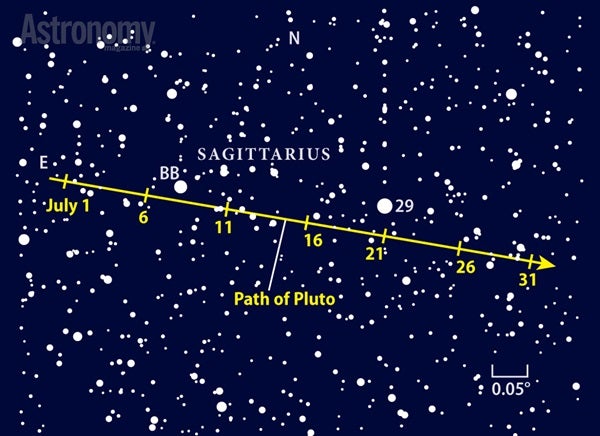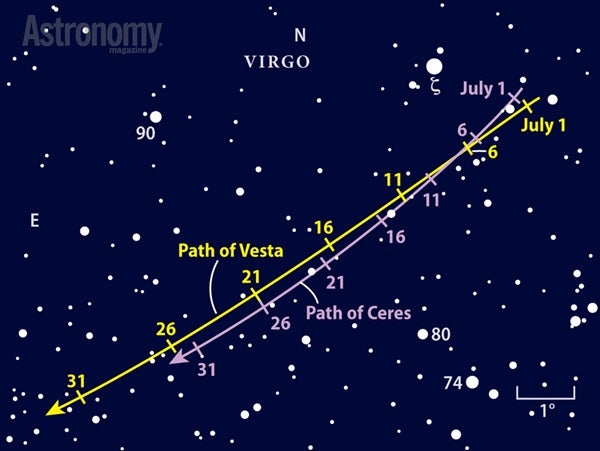Pluto glows at magnitude 14.1 — 1,000 times fainter than the naked-eye limit under a dark sky — among the background stars of northern Sagittarius. You’ll need an 8-inch or larger scope to detect its dim glow visually, though a camera can record it through a smaller instrument.
To track down this object, first find 2nd-magnitude Nunki (Sigma [σ] Sagittarii), the star marking the northeastern corner of the handle in Sagittarius’ Teapot asterism. Next, locate 29 Sgr, a magnitude 5.2 star that lies 6° north and a bit west of Nunki. Pluto remains within 0.5° (30′) of this orange sun throughout July. A fainter star, the 7th-magnitude variable BB Sgr, resides 19′ east of 29 Sgr and also proves useful in detecting Pluto.
Ceres is the largest object in the main asteroid belt between the orbits of Mars and Jupiter. Its gravity molds it into a spherical shape, which is why astronomers also refer to it as a dwarf planet. Despite its size, Ceres typically is not the brightest object in the asteroid belt. Vesta’s surface reflects a greater percentage of the light that hits it than Ceres does, and because it orbits closer to the Sun than its sibling, Vesta also receives more light. Ceres shines at magnitude 8.4 in early July, some three times dimmer than magnitude 7.1 Vesta.
To find the pair, start at 3rd-magnitude Zeta (ζ) Virginis. During early July, both asteroids lie within 1.5° of this star. The finder chart below shows stars to magnitude 8.8, so you should be able to tell which points of light are Ceres and Vesta.
For those of you without optics, Slooh.com will highlight the two events Thursday night, July 3, starting at 8 p.m. EDT (0h UT July 4), live from Slooh observatories located in the Northern and Southern Hemispheres. The Northern Hemisphere observatory is located off the west coast of Africa, at the Institute of Astrophysics of the Canary Islands, and the Southern hemisphere Observatory is located at the Pontificia Universidad Católica de Chile near Santiago. You can watch the live coverage below.











